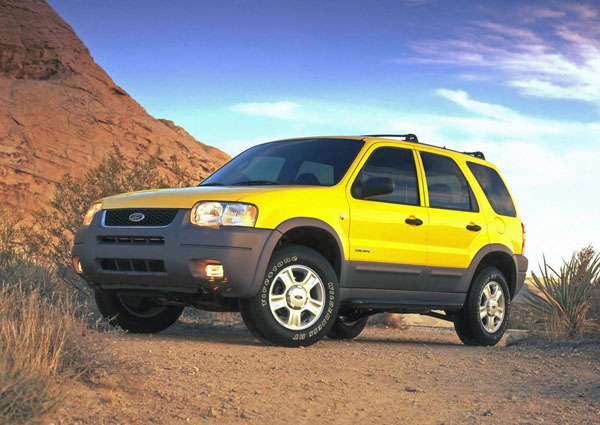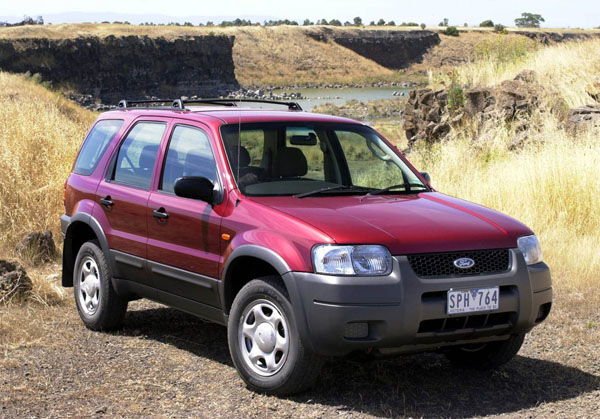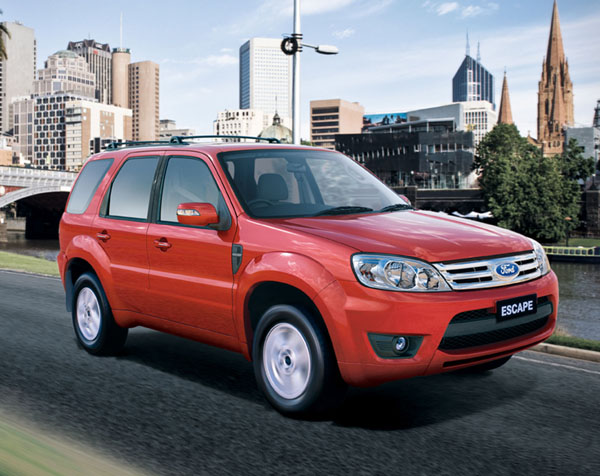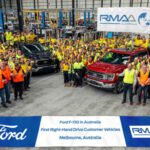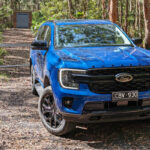Ford Escape is one of the last of the old-school small 4WDs. It was designed as a genuine SUV not a crossover, meaning it has upright styling and works pretty well in off-road conditions. It’s the result of collaboration between Ford USA and Mazda Japan having been designed during the period when Mazda was in financial strife and controlled by the American giant.
Escape has a good compromise between on-road use and off-road ability. When used by the typical buyer in the suburbs most of the time during the week, with some weekend exploring and the occasional big holiday trip works nicely.
The Escape has good interior space for four adults, and there’s room for three children across the back seat. Luggage carrying capacity is pretty good and the load area can be accessed either by way of the hinged glass or a top-hinged full tailgate. The latter is very useful if you’re parked in a restricted area such as that in an underground carpark.
Ride comfort is good, though some may find the steering too light and not particularly sensitive in the straight-ahead position on the original models, initially called the BA, later the ZA Series. Things improved over time and will be discussed in this report.
Interestingly, the Ford Escape was initially powered only by a V6 engine, with a 3.0-litre capacity. The option of a 2.3-litre four-cylinder engine finally arrived in January 2004, at the same time it received a mild facelift inside and out. This second edition Escape was tagged the ZB Series
Performance from the four-cylinder is probably enough for most drivers, but you might want to take one for a test drive, preferably with a few people on board and on hilly roads. The V6 is always there if you don’t like the four.
The four-cylinder engine in the ZC series, from June 2006, is a better unit and possibly the minimum you should aim for if your budget is up to it.
On a positive note, the lighter mass of the four-cylinder engine takes a load off the front suspension. That, and tuning of the suspension and steering to suit Australian conditions, makes it better balanced. It corners almost as well as a conventional car. As always in a 4WD, you have to be aware of the higher centre of gravity.
The V6 was finally pulled from the range in 2008 with the introduction of the ZD Series Escape. The ZD has a revised exterior to give it a slightly tougher look. However, it was starting to look old fashioned as most in this class were now crossovers and so more stylish.
All four and six-cylinder Escapes have a four-speed automatic transmission. By the standards of its day the auto is competent enough and is generally in the right gear to make the best use of the engine’s power. However, while just about everything else in its class had advanced to five gears or more in their autos Ford stuck with the old unit.
There are Ford dealers in almost all areas of Australia, even in outback towns that may or may not have factory representation. Not all in the bush will have minor components for Escapes in their spare parts departments, but can usually get them in two or three business days.
As an old style vehicle the Escape has quite good underbonnet space and the amateur mechanics can do a fair bit of their own work. Leave the safety stuff to the professionals, though.
Insurance doesn’t vary a lot from company to company. Shop around if you will, but If you’re happy with your existing insurer it’s often wise to stick with it if you have a long, clean record.
After an abnormally long period on the market, almost 12 years, Ford finally discontinued Escape early in 2012. It was sort of replaced by the Ford Kuga, a far more modern vehicle but not one that has the off-road ability of the olde-style Escape.
WHAT TO LOOK FOR
As it dates from the time when 4WDs were sometimes taken off-road some Escapes actually got into the bush. Look for scratches in the paint, scrapes on the bottom of the door sills, and damage under the floor. Scratches can be buffed out, but anything else may be a reason for buying something else.
Check the interior, including the boot, for wear and tear as family wagons can lead a rough life at times.
Engines are generally reliable but we suggest taking one for a test drive after it’s sat outdoors overnight. Hard starting, smoke from the exhaust and an unwillingness to accelerate may be signs of serious wear on older models.
Automatics that are slow to change, especially when cold may be due for a service. But it could be something worse.
Brakes should slow the Escape evenly with no one wheel locking before the others.
HOW MUCH?
Expect to pay from $2000 to $3500 for a 2001 Ford Escape XLT; $4000 to $6500 for a 2004 Limited; $6000 to $10,000 for a 2007 XLS; $7500 to $12,000 for a 2010 Escape; and $10,000 to $14,000 for a 2012 Excape.
CAR BUYING TIP
With practice you will learn to pick which cars have always been looked after, and the ones that have just received a big sprucing up to make selling easier.




